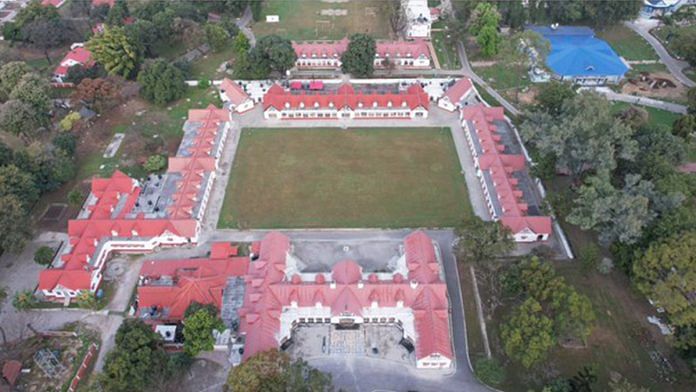New Delhi: The Rashtriya Indian Military College (RIMC) in Dehradun, known as the “cradle of warriors” and “nursery of leadership” that has given the country six service chiefs, 45 Army commanders and equivalent, besides 194 three-star officers, turned 100 Sunday.
Nestled in the verdant Doon valley in the foothills of the Himalayas, the RIMC is an Inter Service Category ‘A’ establishment, administered through the Army Training Command (ARTRAC) under the aegis of the Defence Ministry.
Inaugurated on 13 March 1922 by Edward, the then Prince of Wales and christened as Prince of Wales Royal Indian Military College, the institution is like a feeder institution to the National Defence Academy, Khadakvasla, Officers’ Training Academy, Chennai, and Indian Military Academy, Dehradun, besides others.
After independence, the college was renamed as the Rashtriya Indian Military College (RIMC).
Interestingly, RIMC has also given Pakistan one commander in chief of the army and two chiefs of the air staff — Gen Gul Hassankhan, Air Marshal Asghar Khan and Air Marshal Nur Khan — besides scores of officers of General/Flag/Air rank commanding operational commands, fleets, corps, wings and divisions and other distinguished appointments on both sides of the border.
Also read: Don’t rush into Sainik School public-private partnership. It can dilute and corrupt
Notable alumni of RIMC
“Six service chiefs with over 35 Army commanders, commanders in chief of Air Force and Navy and hundreds of generals, air marshals and admirals from a school where the total number of ex-students is just about 5,000 is a remarkable achievement by any standard,” Air Chief Marshal B.S. Dhanoa (Retd), former IAF chief, himself a ‘Rimcollian’, said.
The Rimcollians who have risen to the top in the Indian military include former Army chiefs General K.S. Thimayya, Gen G.G. Bewoor, Gen V.N. Sharma, Gen S. Padmanabhan and former IAF chief Air Chief Marshal N.C. Suri, besides ACM Dhanoa.
According to Group Captain Deepak Ahluwalia (Retd), secretary and trustee, Rimcollian Old Boys Association, Rimcollians in service include Lt Gen A.S. Bhinder, serving as the GOC-in-C, South Western Command, and Lt Gen Nav K. Khanduri, GOC-in-C, Western Command.
In the Air Force, Rimcollian serving officers include Air Marshal D.P. Dharkar, and Air Marshal N. Tiwary, holding the designations of Senior Air Staff Officer (SASO) and Deputy Chief of Air Staff (DCAS), respectively.
In the Navy, Vice Admiral Adhir Arora is serving as Chief Hydrographer.
The institution says that its purpose when it started was to provide “Indian boys with suitable education and training to ensure a high pass-rate for the Indians being sent to the Royal Military College, Sandhurst, as part of the Indianisation programme of the officer cadre of the Indian Army”.
RIMC was not, in fact, a college, but a pre-Sandhurst institution run along the lines of an English public school. This was in keeping with the British belief that future Army officers required a public school education. If such an education in Britain was impossible, the thinking went, a public school education in India was an absolute necessity.
Admission process
Approximately 25 cadets are admitted to the RIMC every six months. Candidates should not be less than 11-and-a-half years of age or must not have attained the age of 13 on 1 January or 1 July of the term they join.
Admissions are made to Class VIII only and application forms have to be submitted to the respective state governments.
Candidates are selected on the basis of their performance in an All India Entrance Examination, held twice a year, comprising a written examination of papers in English (125 Marks), Mathematics (200 Marks) and General Knowledge (75 Marks). Successful candidates are called for a Viva-Voce test (50 marks) too.
Interestingly, one vacancy per state is allotted. However, some states with larger population have up to two vacancies allotted.
(Edited by Saikat Niyogi)
Also read: The story of Jaswant Singh, the only Indian to have ever commanded a foreign Air Force






